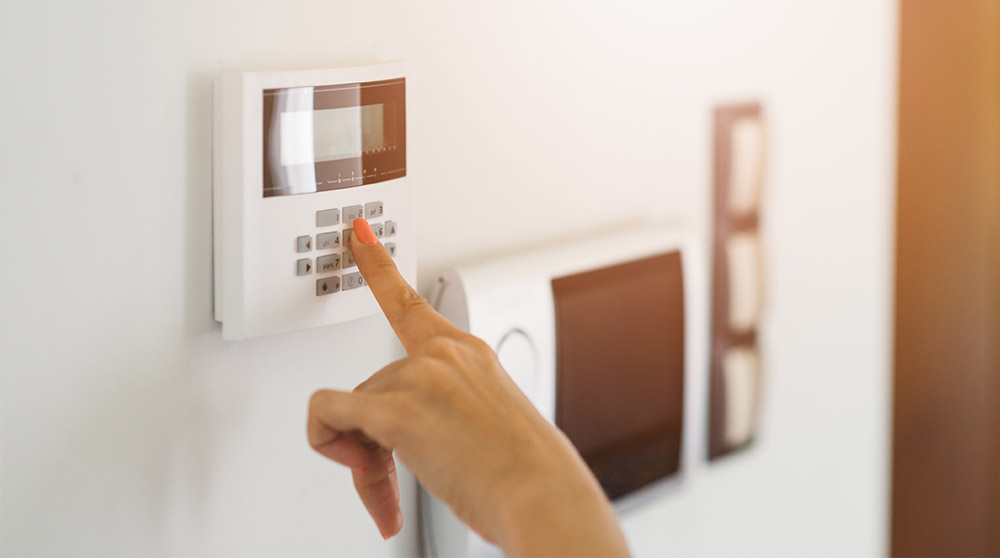Interested in home theft prevention? According to the FBI’s most recent report, there were more than 1.1 million burglaries in the United States in 2019, with victims suffering an estimated $3 billion in property losses (the average loss per burglary was $2,661).
As your loyal partners in protection, the experts at Frankenmuth Insurance are sharing ways to stay safe, starting with tips to create a home inventory. By completing this proactive precaution, you’ll be able to review the inventory and easily identify what, if anything, was taken during a break-in. Then, with the most accurate information, you can start a conversation with your independent agent.
Take an active role in home theft prevention by exploring these 11 tips:
- Lock doors and windows. Believe it or not, 34% of burglars enter through the front door, and in total, 81% enter through the first floor. This tells us that most thieves are looking for easy access, so try to make your home more difficult to enter. The simplest way to do this is by closing and locking your doors and windows before leaving (even if it’s just a quick trip) and before going to bed.
- If necessary, change your locks. When you moved into your home, condo or apartment, did you change the locks? If not, take a second to think about how many copies of your key could have been made and distributed. To make sure strangers can’t get into your home, despite a locked door, change the locks, install a deadbolt and add a strike plate — these items can be purchased from your local home improvement store or online retailers. You may also want to upgrade to a smart lock or boost security with a video doorbell.
- Reinforce sliding doors. Typically, sliding doors tend to have locks that aren’t as secure, which is why we suggest installing a security bar in the tracks and/or using a transparent safety film. This will make it almost impossible to smash the glass and enter the home. The Insurance Information Institute says that if it takes a thief more than four or five minutes to break into a home, he/she will go elsewhere.
- Replace your keypad OR change your passcode. After extensive use, your keypad can wear, making your code easier to crack. Fading numbers and/or letters will make your combination visible to criminals, which is why we recommend replacing keypads often. An alternate option is changing the passcode periodically.
- Amp up outdoor lighting. Knowing that most thieves will skip well-lit homes, audit your outdoor lights and remember that brighter is better. Do you have lights by your garage, porch and back door? Around your yard and along any walkways? If you stumble upon any dark spots, you may want to add a light. And for your convenience, consider smart bulbs and/or timers, as well as motion sensors. Triggering light when it matters most, a motion sensor will literally shine a light on crime, which will (hopefully) send intruders running in the opposite direction.
- See it from their perspective. Find time for a quick experiment: Open all your curtains and blinds, specifically on the first floor, then head outside. Walk around your property and make a mental note of what’s visible and where. Because if you can see expensive electronics and/or other valuables, so can criminals. To take away the temptation, you may want to make small adjustments to move items out of view. If that’s not an option, simply keep the shades drawn or purchase a privacy film. Note: Open windows allow thieves to take inventory and view your home’s layout.
- Secure your Wi-Fi. If you use smart devices, like cell phones and tablets, it’s important to keep hackers off your home network. You need a strong security system. Otherwise, criminals could get direct access to your gadgets and your house. To make sure electronics like video doorbells, smart locks and lights can’t be tampered with, secure your wireless router, install antivirus and anti-malware protection, and create passwords that keep your personal information protected.
- Plant thorny shrubs below your window. Of course, they’ll add beauty. But they can also deter burglars. More than likely, its less probable that a thief will try breaking and entering if they could get hurt in the process. As an extra precaution, trim down plants and trees that could be used for cover.
- Break down boxes. Talk about curb appeal. While recycling your boxes may seem like an environmentally conscious process, it can also serve as an open invitation to curious thieves — who now know exactly what to look for. Luckily, this fix is quick. When you buy a big-ticket item, make sure the box it came in is broken down and bagged. Or, drive it to a local recycling center, so your pricier purchases stay secret.
- Keep your car keys by your bed. Instead of on a wall-mounted hook by the door, keep your keys within arm’s reach. Then, if you hear something suspicious or suspect a possible break-in, you can press the panic button to sound the alarm and scare off intruders.
- Get to know your neighbors. In close-knit communities, neighbors are more likely to look out for each other, and it’s often easier for them to spot a stranger. Thus, it stands to reason that with a few extra sets of eyes, there could be less crime.
Planning a trip soon? Read our blog post: How insurance experts protect their homes while they’re on vacation. And remember: Never share your travel plans on social media!
If you have a home security system, you may qualify for discounts on your homeowners policy. Find an independent agent in your area today.


